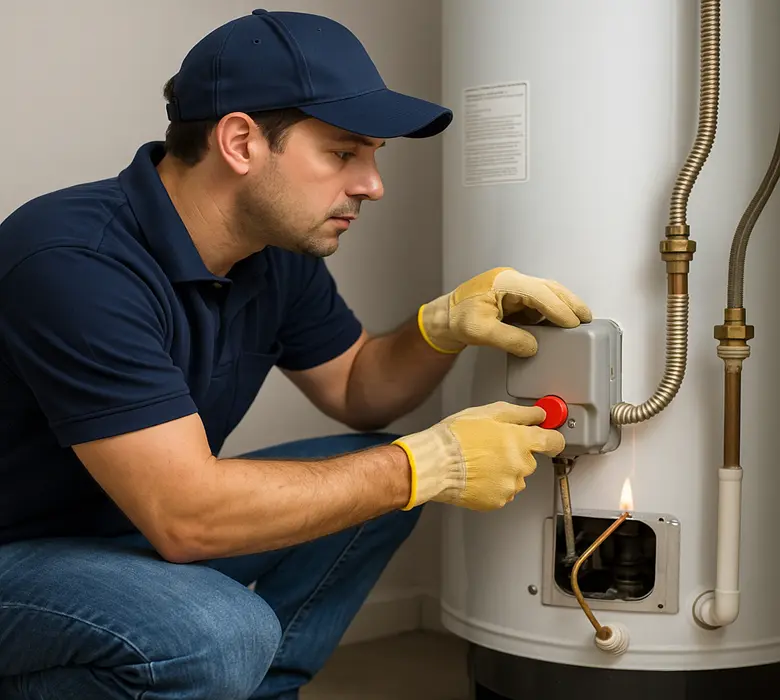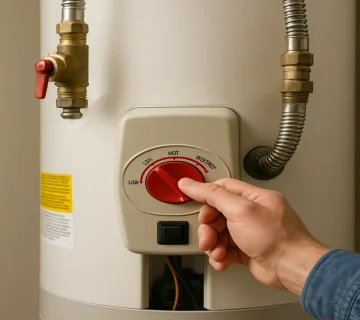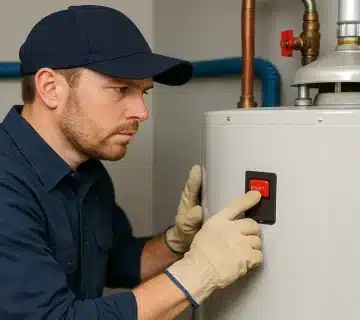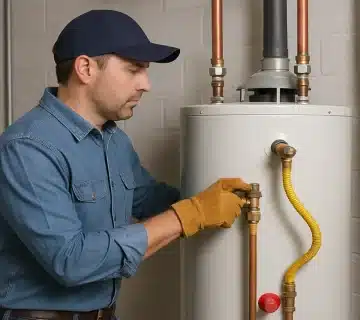If your showers suddenly turn cold, there’s a good chance the pilot light on your gas water heater has gone out. Don’t panic — this is a common issue that most homeowners can fix themselves. Knowing how to light a water heater pilot light safely is an essential skill that saves time, money, and frustration.
This guide explains why pilot lights go out, how to relight them step by step, mistakes to avoid, and when to call a professional.
Why Does the Pilot Light Go Out?
The pilot light is a small flame that ignites the gas burner when hot water is needed. If it goes out, your water heater won’t heat at all. Common causes include:
- Drafts or airflow blowing out the flame.
- Thermocouple issues where the safety sensor fails to detect the flame.
- Gas supply interruptions due to valve or utility problems.
- Dirt buildup around the pilot orifice.
Understanding these causes helps you not only learn how to light a water heater pilot light, but also prevent it from going out again.
How to Light a Water Heater Pilot Light: 7 Proven Safe Steps
Follow these steps carefully:
- Turn Off the Gas
- Locate the gas control knob on the heater.
- Turn it to the “OFF” position and wait at least 5 minutes to let any residual gas clear.
- Access the Pilot Area
- Remove the access panel at the bottom of your heater.
- Use a flashlight to locate the pilot tube and burner.
- Turn the Knob to “Pilot”
- Rotate the gas control knob to the “PILOT” position.
- Hold it down to allow gas flow to the pilot area.
- Ignite the Pilot
- Use a long lighter or the built-in igniter button.
- Keep holding the knob down for 30–60 seconds until the flame stays lit.
- Release and Switch to “On”
- Slowly release the knob.
- If the pilot light remains steady, turn the knob to “ON.”
- Replace the Access Cover
- Secure the cover back in place before operating the heater.
- Test the Heater
- Turn on a hot water tap and listen for the burner to ignite.
Mistakes to Avoid
- Relighting without waiting 5 minutes after turning gas off.
- Using a standard lighter instead of a long match or igniter.
- Leaving the access panel off.
- Ignoring repeated pilot outages without professional help.
When to Call a Professional
If your pilot light won’t stay lit after multiple tries, or you smell gas, stop immediately and call a licensed plumber or your gas utility company. Common fixes may include replacing the thermocouple, repairing the gas valve, or cleaning the burner assembly.
FAQs: How to Light a Water Heater Pilot Light
Q: How long should I hold the gas control knob down?
About 30–60 seconds to give the thermocouple time to heat.
Q: Can I relight the pilot if I smell gas?
No — turn everything off, ventilate the area, and call your gas utility.
Q: Why does my pilot keep going out?
It’s often a faulty thermocouple or gas valve that needs repair.
Final Thoughts
Learning how to light a water heater pilot light is a valuable skill for any homeowner with a gas water heater. By following safe steps — turning off the gas, igniting carefully, and ensuring the flame stays lit — you can restore hot water quickly without waiting for a professional.
Still, if the pilot light continues to go out, it’s a sign of a deeper issue. Professional service will ensure your water heater operates safely and reliably for years to come.
Regular maintenance, such as checking the thermocouple and cleaning dust around the burner, also helps prevent pilot light failures. By combining safe relighting practices with routine care, your gas water heater will deliver steady hot water more reliably.





